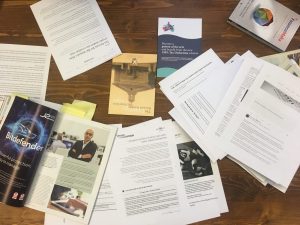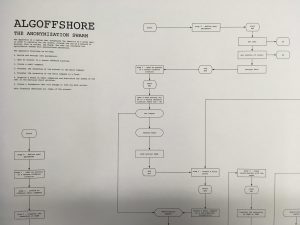This workshop by RYBN was based on the understanding, similar to Rijer Pieter Hendrikse’s, of offshore as a global structure. What is the relation between offshore and culture?
The Great Offshore Methodology
The workshop is based on the simple methodology of The Great Offshore, designed for the rybn.org-platform. During every trip abroad, RYBN gathers a number of (symbolic) documents from a wide array of sources dealing with topics like crypto, tax evasion, and tax optimization. For instance, during a journey to Malta, they collected newspapers, academic articles, interviews, advertisements, booklets, and other materials. They then use these documents to create entries to The Great Offshore Encyclopedia, as well as an online archive of articles.
Next, these sources are analyzed to make an autopsy of the system they are taken from. Extracting bits and pieces of information from the various sources, open-ended, imaginative, speculative, collaborative, theoretical drawings and graphs are produced. These give a visual overview of the steps taken to maximize tax reduction using art, perform money laundering through tumblers, or to erase digital traces through crypto mixers.
Workshop
This workshop was possibly one of the most meticulous, specialized, and geeky parts of MoneyLab #7. Putting a pile of documents collected in Malta on the table, it was suggested that, then and there, we would collectively map and analyze one of those financial realms that remain black boxes to most of us due to their purposely complicated character. This proved to be a bit too high of an entry level into executive work for the short time we had at our disposal. Instead, RYBN’s presentation led to a discussion on the interrelation between art, tax, crypto and the market. Inspired by their mapping of the art world tax evasion mechanisms, the discussion turned to the pumpin’ and dumpin’ of Chinese contemporary art in the 2000s and of Neue Slowenische Kunst in the 1990s.
Most of those present contributed examples and insights from their own practice, and soon possible transnational collaborations started to emerge. Even though a collective mapping proved too ambitious at the end of two days of MoneyLab, the Great Offshore therefore turned into a different kind of constructive gathering: a gathering of transnational counternetworking and collaborative work towards the future of MoneyLab.




